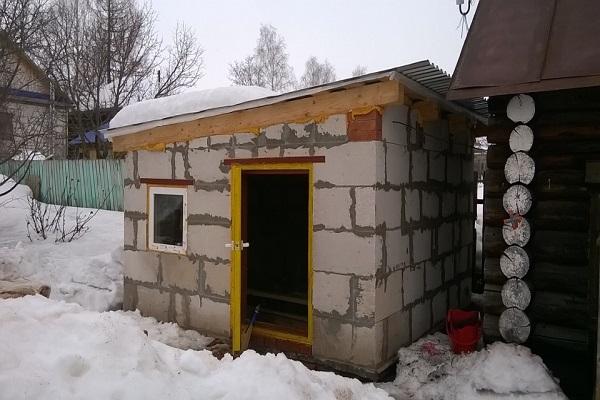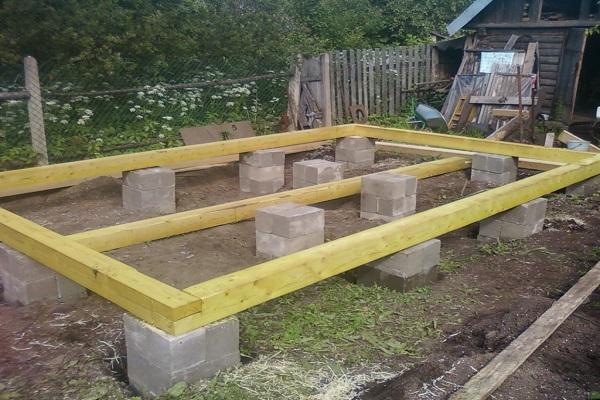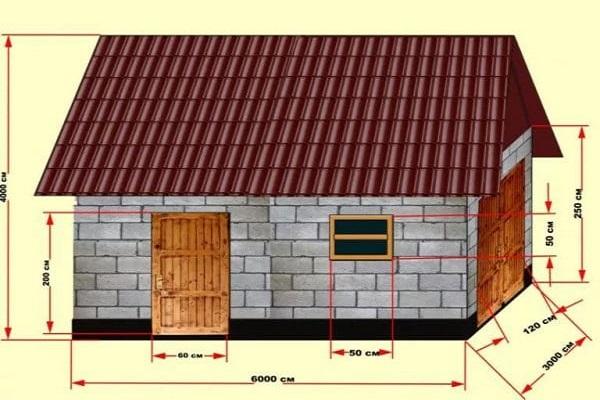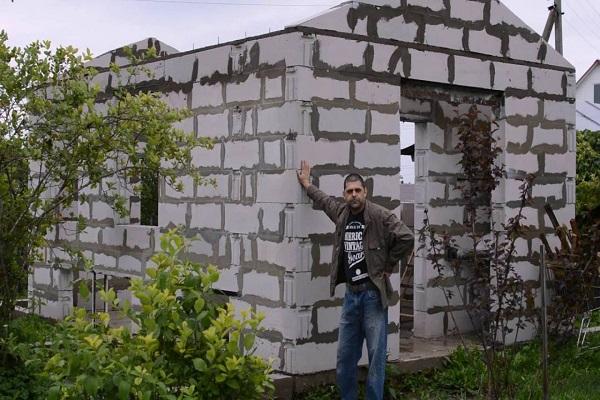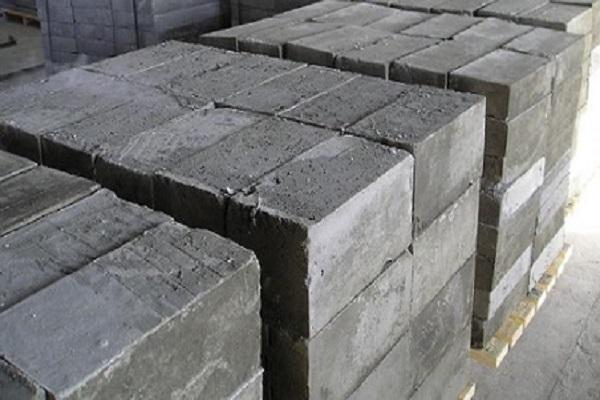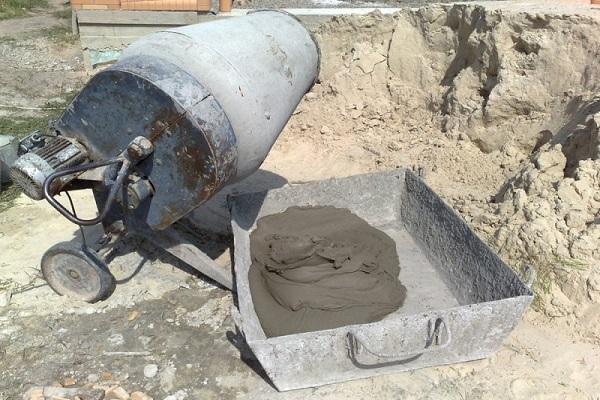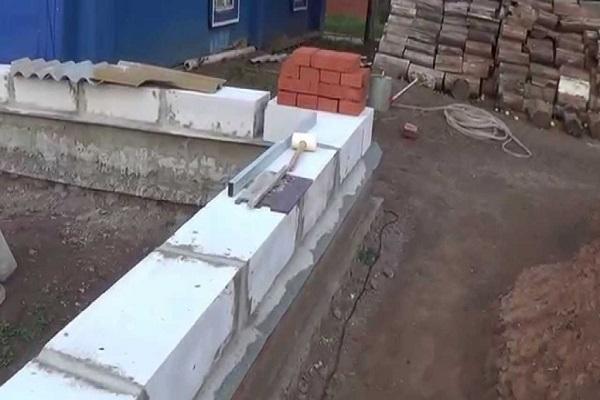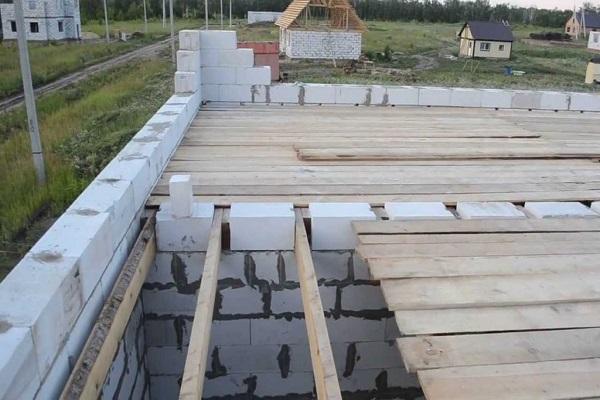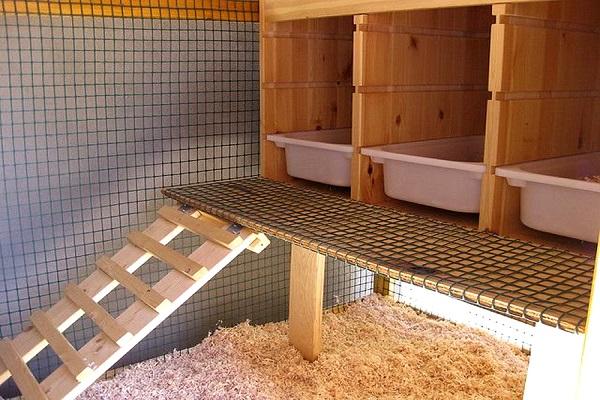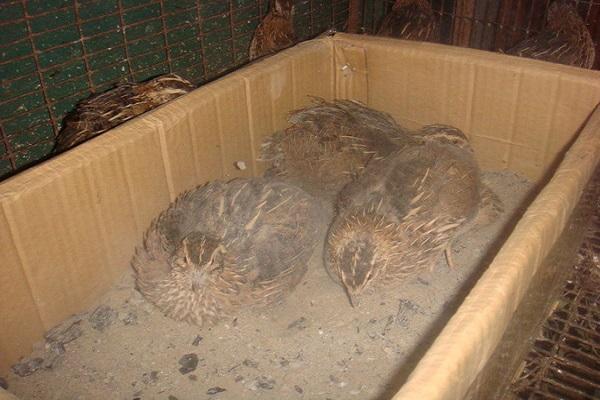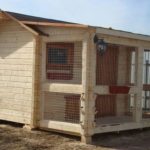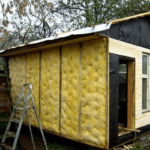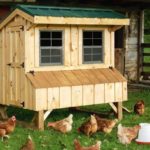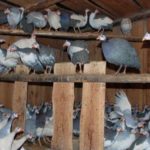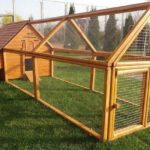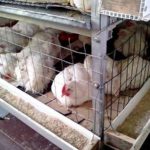A do-it-yourself chicken coop made of foam blocks can be an excellent home for chickens. The poultry house is easy to design, quick to build, and the cost of construction is not that high. Birds feel quite comfortable in such a building during the cold season, because even without insulation, a thick wall made of foam blocks ensures a temperature in winter above 10 degrees Celsius.
- Advantages and disadvantages of chicken coops made of foam blocks
- Choosing a site for construction
- Projects
- Dimensions
- Required tools and materials
- How to build a poultry house from foam blocks with your own hands
- Foundation
- Walls
- Roof
- Floor and ceiling
- Insulation in the chicken coop
- Interior arrangement
- Perches and nests
- Drinkers and feeders
- Sand and ash baths
- Lighting and heating
- Ventilation
Advantages and disadvantages of chicken coops made of foam blocks
A chicken coop can be built from wooden beams, shell rock, brick, gas blocks, and cinder blocks. Each type of material has its positive and negative sides. Recently, poultry houses made of cellular concrete, that is, foam concrete or aerated concrete, have become very popular.
Advantages of a chicken coop made of foam blocks:
- excellent thermal insulation characteristics;
- light weight of materials and the ability to save on the foundation;
- low hygroscopicity;
- durability;
- does not burn and does not support combustion;
- can be sanded and trimmed;
- environmental components (cement, sand, water);
- speed of construction;
- does not require finishing or insulation;
- low construction costs.
Disadvantages of the building:
- construction is carried out only using the frame method;
- foam concrete does not hold fasteners well;
- the fragility of foam blocks forces reinforcement to be laid in the area of the openings and in every 5th row.
Choosing a site for construction
It is better to build a poultry house on a hill or on a flat surface that is not flooded with water during rains and melting snow. True, the place should be protected from cold winds by a nearby fence or plantings (trees, shrubs).
The building should be located on sandy and dry soil, away from the road and noisy places; it is advisable to protect chickens from stress and loud sounds.
The windows of the chicken coop should face south, because the birds need to be provided with normal daylight. There should be enough free space near the chicken house to create a walking area.
Projects
Before building a chicken coop, you need to develop a design for the premises and draw a drawing in three projections, indicating all dimensions. A properly made plan will help calculate the amount of materials for construction.When designing a poultry house, you need to remember that 2 chickens should have at least 1 square meter of area.
The minimum size of a building designed for 10-20 chickens is 15-20 square meters. The height of the chicken coop should be 2 meters - it is convenient to enter such a house without bending, and the birds will feel comfortable there. When making a project, you need to choose the type of roof and what it will be: lean-to, flat, gable.
At the design stage, it is necessary to consider the location of windows and doors, as well as the ventilation and heating system. In the room you need to place perches, nests for laying hens, feeders, and drinkers.
Dimensions
The area of the building depends on the number of birds (at the rate of 1 square meter per layer). For ten chickens you can build a house measuring 3x3 meters. In such a poultry house, you can install a tiered perch at a height of 50 centimeters from the floor. For ventilation you will need one pipe with a diameter of 0.20 meters. One 60-watt light bulb is enough for the ceiling. The roof can be pitched.
A barn is being built for 20 chickens with an area of 15-20 square meters. The height of the poultry house should be 2 meters. In such a room there should be two light bulbs with a total power of 120 watts. At a height of 0.5 meters from the floor, you need to install two perches with a total length of 6 meters. For ventilation, one plastic pipe with a diameter of 20 centimeters is enough. The chicken coop must accommodate at least 6 nests.
For 30 chickens, a poultry house with an area of 20-25 square meters is made. In such a room you can install a tiered perch and 10 nests for laying hens. There should be 2-3 light bulbs on the ceiling with a total power of 120-140 watts. The room can be divided into 2 sections so that each has 15 chickens.The roof must be gable.
Required tools and materials
To build a poultry house, you need to buy not only the required number of foam blocks, but other materials and tools. Before you go shopping, you need to make a project and make calculations. In the European part, poultry houses are built with a wall width of one foam block; for cold northern regions, this value will have to be doubled.
Typically, foam concrete blocks of grade D400 and higher are purchased for construction. The amount of material for one row is calculated as follows: add the length of all four walls, divide the value by the length of one block. Then the height of the wall is divided by the height of the foam block and the required number of rows is obtained.
The total number of materials is determined by multiplying the number of blocks in one row by the number of rows.
For construction you need the following materials and tools:
- foam blocks for walls;
- floor beams, boards, roof joists;
- cement, sand for foundation;
- roofing felt for waterproofing;
- metal roof tiles;
- floor boards;
- windows, doors;
- fittings with a diameter of 6-8 millimeters;
- electrical cable, wiring, sockets, switches;
- adhesive cement for masonry;
- hand saw for cutting blocks;
- drill for drilling openings for wiring;
- grinder for drilling grooves for fittings;
- notched trowel for applying adhesive solution;
- rubber hammer for adjusting blocks;
- sanding float for smoothing out uneven surfaces on walls.
How to build a poultry house from foam blocks with your own hands
A chicken coop made of foam blocks is built very quickly. However, it is recommended to take your time and lay no more than 5 rows per day. The masonry is made not with concrete mortar, but with special glue.Although it is more expensive, it allows you to save on insulation.
Foundation
For the chicken coop, a foundation is made from a concrete mixture made from cement, sand, and water, which is poured into the formwork. Such a base will allow the load to be evenly distributed over the entire area. It is imperative to lay waterproofing material between the foundation and the first row to prevent water from penetrating inside.
Walls
The construction of walls begins from the corners. Focusing on one corner (the highest), the blocks are laid on the masonry mortar. If, at the end of the row, the whole foam block does not fit, it is sawn. Reinforcement will help increase the strength of walls. The reinforcement is laid around the entire perimeter in grooves pre-drilled with a grinder and filled with an adhesive solution.
The first reinforcement is done after laying the first row, the second - after the 5th row. Wooden formwork is installed above window and door openings or made from metal corners.
Roof
After the walls are built, the roof is made. First, reinforcement is installed around the entire perimeter, then a wooden beam (it is fixed with anchor bolts). Then the roof skeleton is assembled, floor beams made of timber or boards are installed, vertical posts are erected, and a cornice, that is, sheathing, is made. At the final stage, a roofing covering is installed on top of the waterproofing.
Floor and ceiling
For a poultry house, the floor and ceiling can be made of wooden boards. True, the floor is first poured with concrete on reinforcement, and then a wooden covering is made. The ceiling can be sealed with fiberboard or plywood.
Insulation in the chicken coop
A poultry house made of foam blocks needs to be insulated not from the inside, but from the outside.In this case, you will get a warm chicken coop, and the “dew point” will be brought outside, and the house will not collapse under the influence of moisture. Polystyrene foam is usually used as insulation.
Interior arrangement
The inside walls of the poultry house can be plastered with gypsum plaster and whitewashed with lime. Straw or sawdust must be laid on the floor.
Perches and nests
To build perches, take a beam measuring 40x30 millimeters and round its edges. The bars are installed at a height of at least 50 centimeters from the floor. The perch is fixed to the wall at a distance of 30-40 centimeters from each other. You can place trays with sand under the beams. Nests are installed on the opposite side. They are made from wicker baskets or wooden boxes. The bottom of the nests is lined with straw.
Drinkers and feeders
In the middle of the room, away from perches and nests, drinkers and feeders are installed. Drinking bowls can be made from plastic bowls or you can buy ready-made bunker structures. Long grooves and troughs are suitable for feeders. You can buy ready-made bunker feeders.
Sand and ash baths
Typically, sand and ash, so that chickens can take sand-ash baths, are poured into the bird-walking yard located near the poultry house. The enclosure for walking is made of wooden beams and fine mesh.
Lighting and heating
Electrical wiring and wiring with switches are installed in the poultry house. To lay cables in the walls, grooves are made, after which they are plastered. For lighting, ordinary 60-watt light bulbs are suitable. True, they need to be covered with a shade or mesh.
Ordinary electric or infrared heaters are used as heating devices in the poultry house.
Ventilation
A simple ventilation system is made in the chicken coop, which consists of two plastic pipes with a diameter of 20 centimeters. They are installed near the wall at a distance of 20 centimeters from the floor and in the ceiling, lowered 10 centimeters lower, and taken outside.

